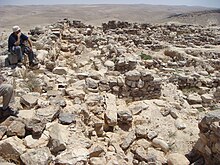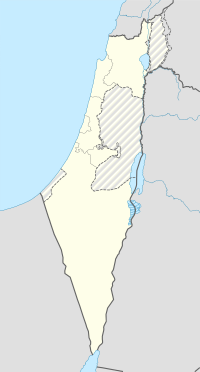חורבת עוזה | |
 Hurvat Uzza, overlooking Kina River at Arad Valley, Israel. | |
| Location | |
|---|---|
| Region | Negev |
| Coordinates | 31°12′33″N 35°09′56″E / 31.20917°N 35.16556°E |
| Type | Fortress |
| History | |
| Periods | Iron Age |
| Cultures | Judahites |
Horvat Uza (Hebrew: חורבת עוזה) is an archaeological site located in the northeast of the Negev desert in Israel. The site is located in the east of the Arad Valley and overlooks Nahal Qinah (Qinah Valley). In ancient times, forts were established there to control the wadi road, linking Judea to Arabah and the territory of Edom. It was mentioned as Qina by Josephus in book 15 of his Antiquities.[1]
Several inscribed potsherds with inscriptions in Hebrew, dated to the 7th-century BCE, were found in Horvat Uza.
